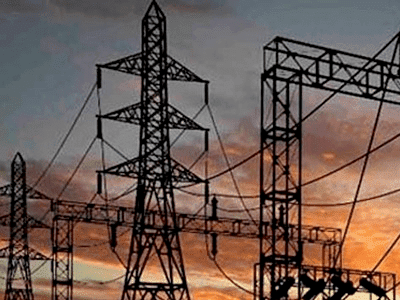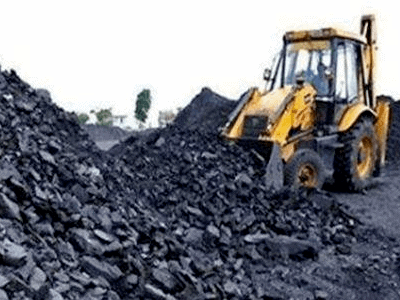August 6, 2012: Last week’s grid failures have put a big question mark on the country’s aggressive plans for the power industry and power sector infrastructure. I’ll try to analyze the issue and measures to prevent such unwanted incidents in future.
Grid failures around the globe: We certainly made a new record this time, not a pleasant experience for us, but yes we had the largest power outage of the world affecting more than 600 million people. It all started with northern grid failure, resulting in a power outage on 30 July affecting 14 states (impacting over 360 million people), followed by another power outage on 31 July affecting 20 states due to collapse of northern, eastern and north eastern grids. Fortunately out of 5 major grids western and southern grids survived. More surprisingly we managed to restore the grids in a very short time; in the USA it took four days to restore the grid during a recent blackout.
Table 1. History of ‘Monster’ blackouts around the world
|
Name |
Population affected (million) |
Location |
Date |
| July 2012 India blackout | 670 | India | 30th-31st July 2012 |
| 2009 Brazil and Paraguay blackout | 87 | Central, south and southeastern Brazil and all Paraguay | 10th-11th November 2009 |
| 2005 Java-Bali blackout | 100 | Indonesia | 18th August 2005 |
| 2003 Italy blackout | 55 | Italy | 28th September 2003 |
| 2003 Northeast blackout | 55 | North America, northeastern US | 14th-15th August 2003 |
| 1999 Southern Brazil blackout | 97 | South and southeastern Brazil | 11th March 1999 |
| 1965 Northeast blackout | 30 | North America, Canada | 9th November 1965 |
The table above shows a list of major blackouts globally. Previously in India, during 2001 the northern grid collapsed and it took at least 12 hours to restore power supply. Minor tripping in the northern grid due to fog during winters of 2008 and 2010 was seen, restoration took 3-4 hours.
What is a grid and how it works? A network of transmission lines carrying electricity from power plants to users including power distribution companies. States in each region communicate their electricity drawl schedule to their respective load dispatch centers, which monitor grid frequency and voltage. Grids in India operate in a narrow frequency band of 49.5 Hz to 50.2 Hz.
What is a grid failure or collapse: It is simply any disruption in supply from grid. A grid collapses when the frequency crosses the lower or upper limit (49.5-50.2 Hz) of the band. As a result, transmission lines stop accepting power supply from generating stations, and other grid constituents.
Reasons for the July 2012 India grid collapse: Generally a grid fails due to any technical or human error or sometimes due to natural climatic conditions and calamities. It is a tough task to find the reasons as experts need to go through the details of per-second consumption and supply by each constituent of the grid at the time of the collapse. In the current case it is difficult to provide a valid reason for the collapse but I feel it could be due to one or more of the below mentioned factors, acting together to put pressure on the grid, which resulted in the grid failure:
- Overdrawing of power: Overdrawing of power from the grid leads to fluctuation in frequency which causes the collapse. As per power industry sources, UP and Haryana were both drawing 20 per cent more power than their allocated quota just before the Northern Grid collapsed. Punjab and Rajasthan followed drawing 5 to 10 per cent extra over and above their permitted allocation. UP was the worst of the lot drawing 1,000 MW more power than it should have been drawing.
- Late arrival of Monsoon: With no sign of monsoons, farmers have begun using more power to pump out ground water for irrigation. The result: higher demand and low supply even during non-peak periods. With low monsoon, hydropower plants produced 9 per cent less electricity in April-June 2012 than the corresponding months in 2011. As hydropower plants are also peak load plants, this reduction seems to have affected the peak power generation capacity in the country significantly.
- Major technical fault:A grid collapse can be due to a major technical fault. Normally, during a simple demand-supply problem, the grid operator can intervene to strike a balance. But something seems to have gone terribly wrong, which caused the backup safety systems to fail.As per the industry experts two other significant factors would need to be present for a grid failure. First, the grid must have been already unstable at the time and second, the relays that operate to separate different parts of the system in order to isolate the unstable portion of the grid, did not act in time.
The Ministry of Power has appointed an expert committee to go deep into the reasons for the grid failure and the committee will submit the report in 15 days.
How to avoid grid failures: Here comes the crux of the whole story…as we already know we do not have adequate power supply for India’s large population. While our consumption is increasing rapidly, we are not able to meet the power generation targets through the Five Year plans. Awareness about energy conservation is very limited and further, AT&C losses in the country range between 26% to 28%. This shows how much pressure our grids have to bear.
Measures to avoid such mega grid failures and the resulting monster blackouts are not very easy to implement, but we need to work aggressively on available remedies outlined below, to achieve a stable grid:
- Restricting power overdrawn: We need asystem that ensures the states do not overdraw power. As physical control over excess drawl is not possible so only a financial penalty is applicable. Government should ensure strict grid discipline. The penalty amount should be very heavy so that states will think before overdrawing electricity beyond their sanctioned quota. Regional load dispatch centers (RLDCs) should be given more power to deal with states in case of overdrawing of power.
- Use of unconventional / renewable sources: We need to change our electricity generation configuration for the stability of the grid. In this context, large-scale installation of renewable energy plants such as wind and solar power plants will play a major role in stabilizing the grid, as their power generation profile—especially that of solar—matches the peak demand in the country. Distributed generation at the local level can also significantly reduce the burden on the grid, if utilized properly.
- Adopting smart grid technologies: Smart grid monitoring and diagnostics technologies help utilities maximize asset performance and reduce unexpected grid failure and subsequent power outages through alerts, detection, diagnosis, and prognosis. Smart sensors will detect and report potential problems back to the utility in real-time. In addition to improving grid reliability by predicting and preventing asset failure, these technologies also have environmental benefits. Smart grid automation technologies, such as distribution management systems and outage management systems, can work in conjunction with smart meters and advanced metering infrastructure to provide real-time knowledge of the grid’s status, enabling utilities to prevent trouble before it occurs.
- Reducing dependency on coal: A recent industry survey showed nearly all the thermal power plants in India having less than seven days of coal stock, a critical level, and many of the country’s power plants running below capacity. Such a scenario can contribute to grid failure and lead to delays in restoration of power supply.
- Energy efficiency in different sectors: “2 megawatt of electricity generated is equal to 1 megawatt of electricity saved.” Going forward, this equation will soon change to 3: 1. According to the Planning Commission of India, nearly 25,000 MW of capacity creation can be avoided through energy efficiency in the electricity sector alone. According to a recent CyberMedia Research study, energy saving potential ranges from 20% to 30% in different sectors (industrial, transport, agriculture, municipal etc.).
- Private participation in the transmission sector: The Indian power sector was opened to private players a long time ago but these players are working mainly in generation and distribution sectors. More private participation in transmission will help the Power Grid Corporation of India Ltd., the world’s biggest transmission company by capacity, to ease some pressure by laying new transmission lines and by preparing innovative plans for this sector.
Similar accidents can happen again as we do not have a modern grid management system in place in the country, which can proactively work to prevent a grid collapse from recurring. Smart grid is still a buzzword in the country. However, I feel the Government of India’s Rs. 500 crore plan for smart grid pilots in the country, if implemented speedily, can show the right path and lead to smart grids becoming a reality in the country in the next few years. This, along with emphasis on greater energy efficiency, more dependence on renewable sources of supply and infrastructure development for the power sector can lead to a stable, balanced supply: demand scenario. Programmes like R-APDRP should now get more focus and help in further reducing AT&C losses.
Thus, the mega grid collapse in late-July 2012 is a wake-up call for the India power industry and policymakers, alike. Going forward, it is extremely important that this leads to urgent, all-round measures to improve not only generation capacities, but transmission and distribution infrastructure as well. The goal should be to allow the people of India to live productive, “energy-enriched” lives, in a sustainable manner, at par with their counterparts in North America, Western Europe and Japan.






